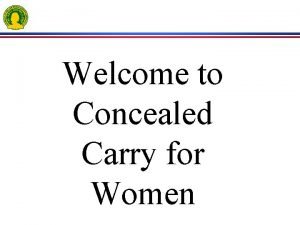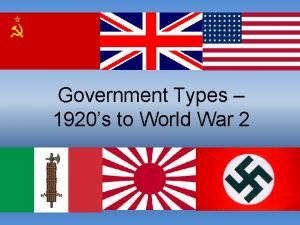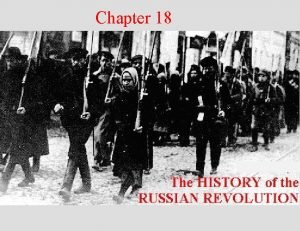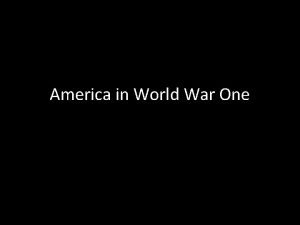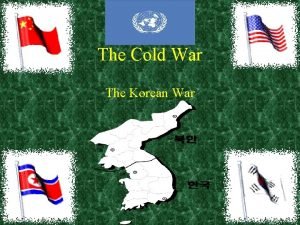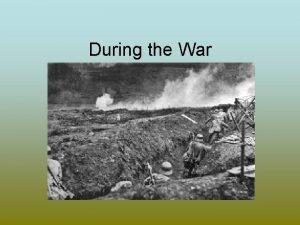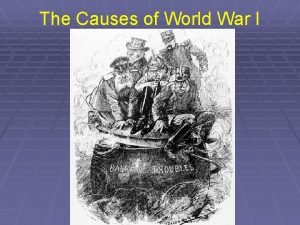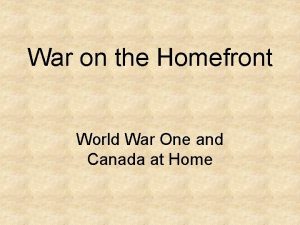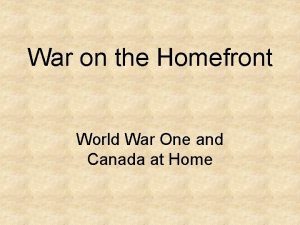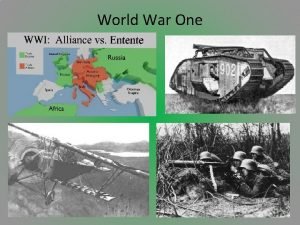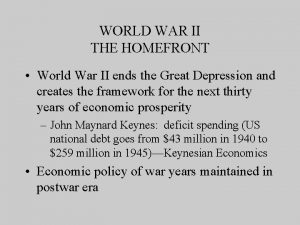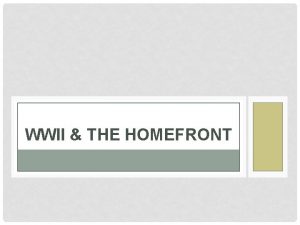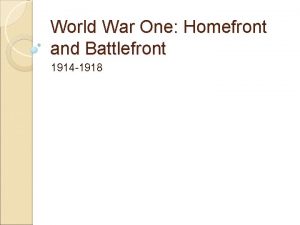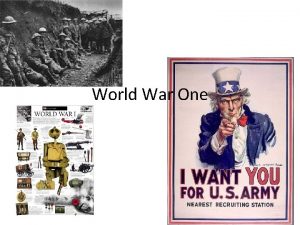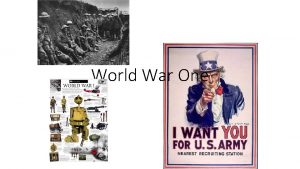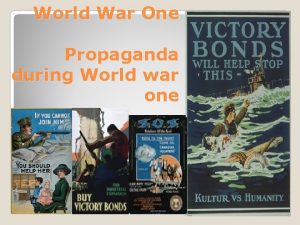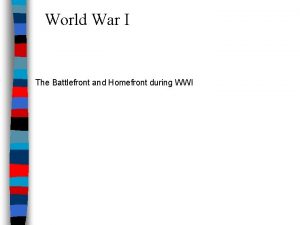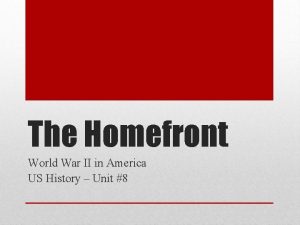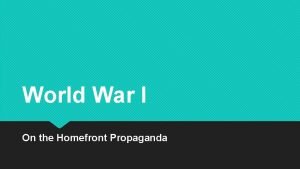World War One The Homefront and the War



















- Slides: 19

World War One The Homefront and the War Effort CHC 2 D 8 Ms. Gluskin

Day 1 – Did the government rise to the challenge of preparing for war? Will Patrick Chan rise to the challenge of winning the gold medal in figure skating? CHALLENGES

Problems and Solutions • Now we know about the battles going on in Europe. • What was the government doing back home in Canada to organize the war effort, get Canada ready (prepared) for war? – What problems would the government face? – What solutions would they come up with? Causes and consequences

Getting Soldiers to Volunteer

Communicate Through Propaganda Why is this a successful poster / billboard? 1917 -18 poster Canadian War Museum, Canadian Wartime Propaganda, N. d. ,

Vocabulary (36 -37) • homefront (noun) = what is happening at home during the war – The homefront was just as important to the war as the battles in Europe. • front (noun) = a place where battles are fought – In Europe there was a western front (Belgium, France), an eastern front (with Russia), and a homefront. • challenge (noun) = a problem that has to be solved – It is a challenge to take Canadian history when you are so new to Canada. The course is challenging (adjective). • training (noun) = getting people ready for something – Olympic athletes do their training for many years before they become gold medalists. They are well trained (adjective).

Vocabulary, con’t • recruits (noun) = volunteers for the war – Many new recruits were needed as soldiers died in battles in Europe. The government had to recruit (verb) men who were willing to fight. • enlist (verb) = to volunteer for something – At the beginning of the war more soldiers enlisted than at the end. All of the soldiers were enlisted (adjective) men. • income tax (noun) = a % of people’s income that goes to the government – Canadians pay income tax so that the government can use that money to pay for services such as health care for the people of Canada.

Vocabulary, con’t • Victory Bonds (noun) = money loaned to the government to help pay for the war effort – The government used advertising to make Canadians want to buy Victory Bonds during the war. • loan (noun) = money given to someone that will be repaid with interest – A bank will give people a loan if they want to buy a new car, however, they will have to pay it back with interest. • propaganda (see page 41) (noun) = spreading carefully selected information, rumours and ideas – During the war the government used propaganda posters to get Canadians to support the war.

Propaganda Techniques • Propaganda posters are designed to deliver a specific message to a specific audience. Some techniques (strategies) used to create propaganda posters include: – colour and symbols (e. g. , red might symbolize blood) – appeal to emotions (e. g. , fear, sense of adventure, sense of duty) – images that are important to an audience (e. g. , commitment to family, church, or country) – bold (very strong) slogans (little phrases that are easy to remember)

• As a result, you may see some of the following ideas and images in World War I propaganda posters: – emotional images – threats to family, church, or country – the Union Jack (Britain’s flag) – symbols of France, such as a soldier in French uniform

En-words • Enjoy (to enter into joy) • Enlist – To volunteer to join the army • (to enter the list of citizens in the army)

Three Challenges • Page 40 -41 • Fill in the left-hand column. – What is the challenge? • Describe it briefly • Training example: – – Disorganized missing equipment Equipment that didn’t work Short (3 months)

Report Card Comments • A comment is your opinion of why or why not the Canadian government did a good job in preparing for the war. – Bad comment: • The government did a good job. – Good comment: • I gave the government an A because it prepared Canadians for war by …

Day 2 CONSCRIPTION

Vocabulary 42 -43, 54 -55 • conscription = force people to go to war (see page 42) • reluctant = not sure about doing something • language barrier • excused = not required to do something • pacifism = a belief that it is wrong to go to war

Conscription Crisis • Is it ever right to force citizens to go to war?

Historical Perspectives • Perspectives = views, ways of seeing things • Not everyone in Canada had the same view on conscription. – Some thought it was a good idea – Some thought it was a bad idea

Canadian War Museum, Canadian Wartime Propaganda, First World War, N. d. , http: //www. warmuseum. ca/cwm/exhibitions/propaganda/poster 5_e. shtml (Feb. 14, 2014).

Journal Entry #2 • Explain how different people in Canada had different views/opinions on conscription. – Given these different views, do you think the government was right to introduce conscription? Answer both questions. Length: ½ to ¾ page, double spaced.
 Gungoddess holster
Gungoddess holster Homefront wsgc
Homefront wsgc Through one man sin entered the world, and through one man
Through one man sin entered the world, and through one man One face one voice one habit and two persons
One face one voice one habit and two persons World war 2 jeopardy questions
World war 2 jeopardy questions World war one
World war one World war one
World war one Yagoda
Yagoda World war one
World war one World war one
World war one “we are trying to prevent a world war, not start one”
“we are trying to prevent a world war, not start one” Alliance ww1 cartoon
Alliance ww1 cartoon World war 2 long term causes
World war 2 long term causes One empire one god one emperor
One empire one god one emperor One one little dog run
One one little dog run One king one law one faith
One king one law one faith One god one empire one emperor
One god one empire one emperor One ford behaviors
One ford behaviors See one do one teach one
See one do one teach one See one, do one, teach one
See one, do one, teach one
